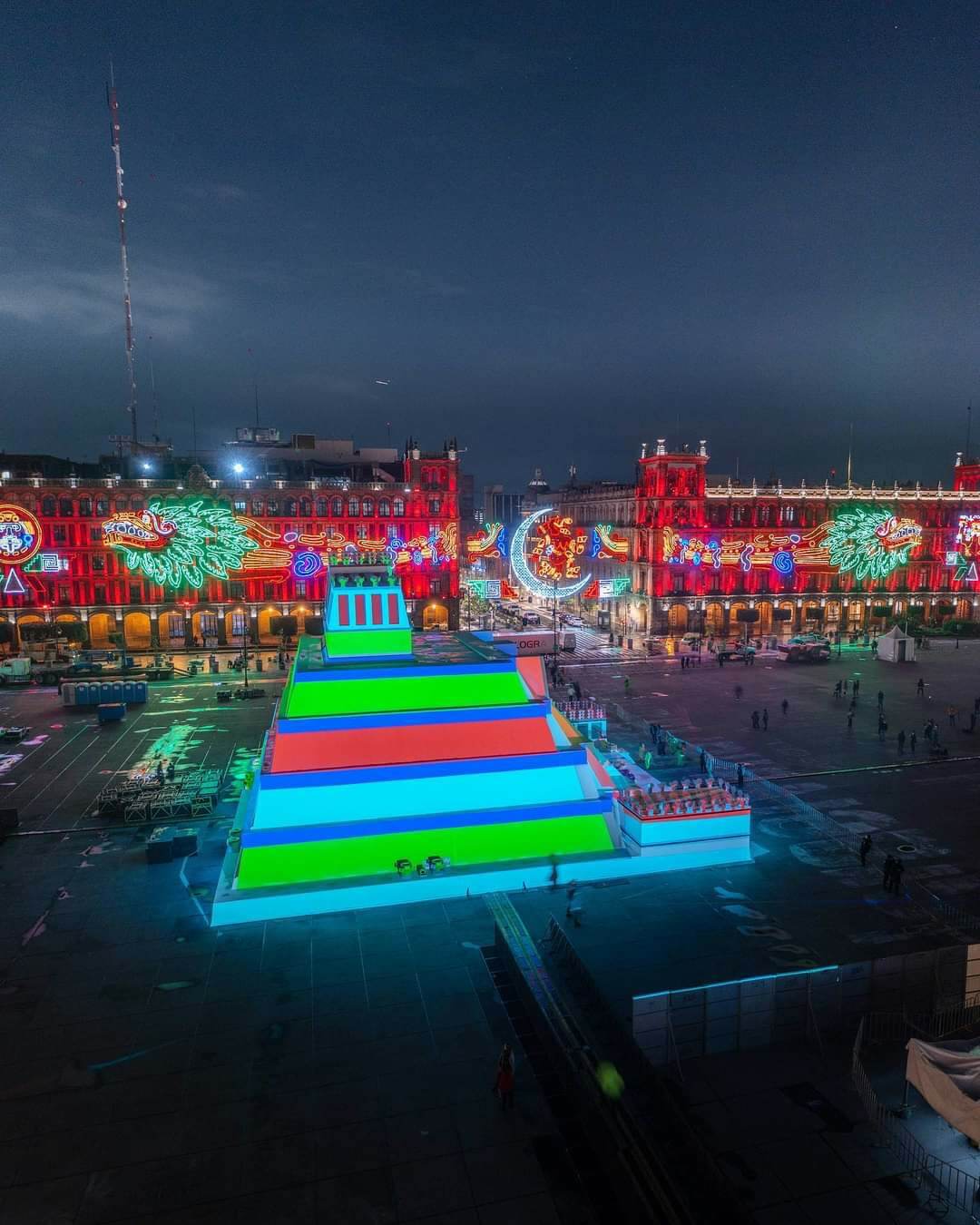In 1521, when Spanish conquistadors led by Hernán Cortés seized the city of Tenochtitlan from the Aztec emperor Montezuma, they went about destroying its massive central temple to make way for a church. The towering pyramid, known in the Indigenous Nahuatl language as Huēyi Teōcalli and in Spanish as Templo Mayor, had loomed about 200 feet over the Aztec capital since the mid-14th century. According to Reuters, an official with Mexico’s culture ministry called the temple “the center of the universe. It was the point at which one could enter the underworld and the different celestial levels.” The Spanish reduced its monumental staircases to little more than their foundations, repurposing many of the structure’s stones to build the church that eventually evolved into the Mexico City Metropolitan Cathedral.
To commemorate the quincentennial of the conquest of Tenochtitlan and, more specifically, 500 years of Indigenous resistance since the city’s fall, the Mexican government has now erected a large-scale (though not quite full-scale) replica of the monument. Built with polystyrene, a synthetic polymer often used to create rigid foam takeout containers, the walls of the replica are illuminated each night in a neon light show that has drawn online criticism and comparisons to images of Homer Simpson’s hallucinatory encounter with “The Space Coyote” in The Simpsons.
The replica stands in the city’s main square, just steps from the archaeological site where the remains of the actual Huēyi Teōcalli and an accompanying museum serve as popular tourist attractions. In late April of this year, a major rain and hail storm completely destroyed a metal roof designed to protect a portion of the site. The incident caused damage to the stonework on the House of Eagles structure, where Mexica or Aztec leaders would prepare themselves for death and the afterlife, though Mexico’s culture ministry called the impact “minor, recoverable, and restorable.” Authorities almost immediately initiated an effort to rebuild the protective roof so that the remains of the sacred precinct could be further studied and viewed.

While it did not directly affect Huēyi Teōcalli itself, the collapse has already drawn attention to the more extended difficulties facing one of Mexico’s most famous archaeological sites. Under the administration of President Andrés Manuel López Obrador, funding for excavations and research at Huēyi Teōcalli has been cut by upwards of 75 percent. Government expenditures associated with the COVID-19 pandemic relegated even more archaeological projects to the budgetary backburner. Earlier this month, officials with Mexico’s National Institute of Anthropology and History (INAH) announced that they would re-bury a recently discovered early colonial tunnel with Aztec construction elements due to financial shortfalls.
Constraints on Mexico’s ability to fully fund the excavation and preservation of one of its most prized architectural ruins has called into question the government’s decision to build the neon-lit replica in the middle of the capital. While the cost of the makeshift structure has not been disclosed, many members of the public have suggested that the money should have been funneled towards the conservation or restoration of the real Huēyi Teōcalli.











